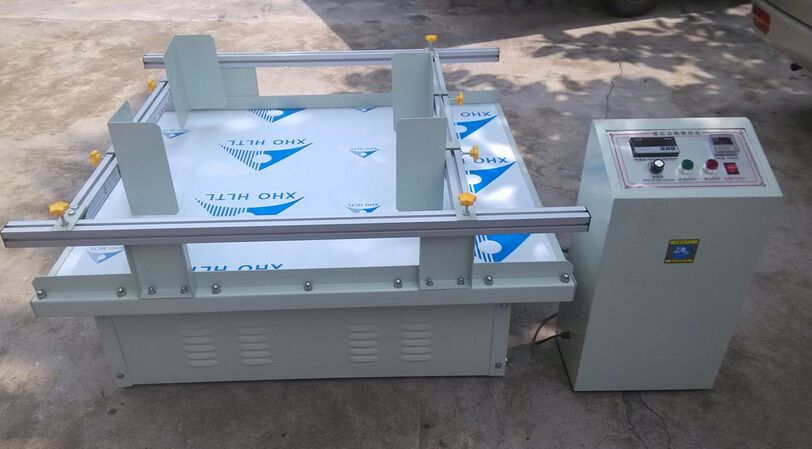ASTM D999-15 Vibration Testing Under Controlled Conditions
The ASTM D999-15 standard provides a method for determining the effectiveness of packaging designed to protect contents from vibration damage. This service is critical in ensuring that products shipped by air, road, or sea endure the rigors of transportation without sustaining damage. Proper packaging can significantly reduce product liability and warranty claims, thus enhancing customer satisfaction and operational efficiency.
The test simulates real-world conditions using a controlled vibration environment to evaluate the performance of packaging under specified frequency, amplitude, and duration parameters. This process helps manufacturers identify potential flaws in their design early on, allowing for necessary improvements before full-scale production begins. By adhering to this standard, companies can ensure compliance with industry best practices and regulatory requirements.
In the context of quality management, ASTM D999-15 is used as a tool to validate that packaging meets the stringent standards set forth by international bodies like ISO and ASTM. It serves R&D engineers in refining product designs and compliance officers in ensuring adherence to legal mandates. For procurement teams, this service supports the evaluation of suppliers' capabilities and ensures consistency across different manufacturing facilities.
The test setup involves placing a representative sample within the vibration testing machine which can simulate various modes of transportation including airplanes, ships, trucks, and trains. The machine then applies vibrations at specified frequencies, amplitudes, and durations to replicate actual transport conditions. After the test concludes, engineers analyze data points such as peak acceleration levels, frequency content, and duration effects on the packaging.
Compliance with ASTM D999-15 ensures that products are not only protected during transit but also meet global standards for product safety and sustainability. This service is particularly beneficial when dealing with sensitive electronics, pharmaceuticals, or any goods that could be compromised by physical jostling during shipment.
Scope and Methodology
| Parameter | Description | Unit |
|---|---|---|
| Vibration Frequency Range | The range of frequencies that the test setup can apply to simulate various transportation modes. | Hertz (Hz) |
| Vibration Amplitude | The maximum displacement or acceleration level at which the packaging is subjected during testing. | Milli-g (mG) |
| Durational Exposure Time | The total time over which the vibration is applied to the sample. | Seconds (s) |
| Number of Cycles | The number of complete cycles of vibration that are conducted during testing. | - |
This table outlines key parameters used in ASTM D999-15 vibration testing, ensuring precise control over the environmental factors affecting packaging performance. The testing apparatus typically includes a shaker system capable of generating controlled vibrations along three axes (X, Y, Z) to simulate all possible orientations during transport.
Benefits
- Enhanced Product Protection: Ensures that packaging effectively protects contents from damage due to vibration.
- Compliance Assurance: Meets industry standards and regulatory requirements for product safety and quality.
- Risk Mitigation: Identifies potential issues early in the design phase, reducing costs associated with post-production modifications.
- Improved Reputation: Demonstrates commitment to high-quality packaging practices, enhancing brand reputation among customers.
The benefits of ASTM D999-15 testing extend beyond mere compliance; it provides valuable insights into how different materials and designs perform under specific conditions. This information can be used to innovate new solutions tailored specifically for your product's unique needs.
Quality and Reliability Assurance
Vibration testing is a cornerstone of quality assurance programs aimed at maintaining consistent standards across all stages of production, from design through final assembly. By incorporating ASTM D999-15 into their processes, companies can ensure that every unit shipped meets rigorous performance criteria.
Through detailed analysis of test results, manufacturers gain actionable insights that inform future iterations of packaging designs. This continuous improvement cycle not only enhances product quality but also fosters innovation within the supply chain. Moreover, adherence to this standard demonstrates a company's dedication to excellence, which can translate into better customer satisfaction and long-term loyalty.
For procurement teams, selecting suppliers who utilize ASTM D999-15 ensures that they are working with partners committed to maintaining high standards of quality control throughout the entire lifecycle of their products. This approach helps maintain consistency across multiple manufacturing sites and reduces variability in performance characteristics between batches or shipments.





